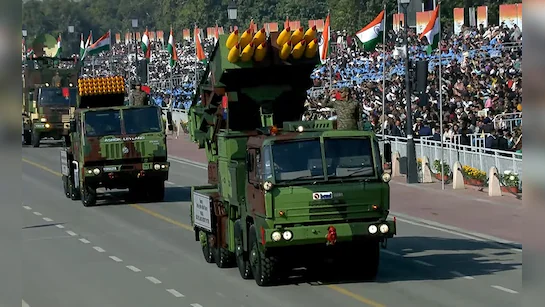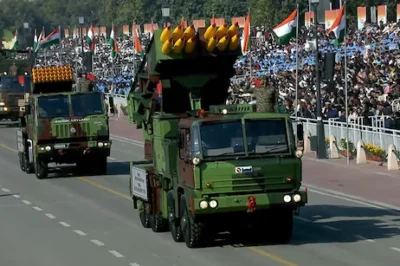
A Strategic Shift in Defence Policy
India’s defence budget for the fiscal year 2025–26 is poised for a significant increase, potentially surpassing ₹7 lakh crore, following the successful execution of ‘Operation Sindoor’. This operation, a coordinated multi-service cross-border military action, has prompted the government to consider an additional allocation of approximately ₹50,000 crore to bolster the nation’s defence capabilities.
Operation Sindoor: A Decisive Military Action
Launched in response to a terror attack in Pahalgam, ‘Operation Sindoor’ involved joint airstrikes targeting nine terror camps in Pakistan and Pakistan-Occupied Kashmir. Utilizing Rafale jets equipped with SCALP cruise missiles and HAMMER precision-guided munitions, the operation demonstrated India’s advanced military capabilities. The success of this mission has underscored the need for enhanced defence preparedness and modernization.
Enhanced Defence Budget Allocation
In the Union Budget 2025–26, the Ministry of Defence (MoD) received a record allocation of ₹6.81 lakh crore, marking a 9.53% increase from the previous fiscal year and constituting 13.45% of the total Union Budget, the highest among all ministries. A significant portion, ₹1.80 lakh crore, is dedicated to capital outlay for defence services, reflecting a 4.65% increase from the previous year. Of this, ₹1.48 lakh crore is earmarked for capital acquisitions aimed at modernizing the armed forces with state-of-the-art weaponry and technology.
Focus on Indigenous Defence Manufacturing
A key objective of the increased budget is to drive self-reliance in defence manufacturing. Approximately ₹1.11 lakh crore (75% of the modernization budget) is earmarked for domestic procurement, with ₹27,886 crore allocated for purchases from domestic private industries. This move aims to bolster the private sector’s participation in India’s defence ecosystem, ensuring that the country reduces dependence on foreign suppliers and builds a robust indigenous defence manufacturing base.
Advancements in Defence Technology
The budget also highlights the focus on emerging technologies such as Artificial Intelligence (AI), Machine Learning, Robotics, and Cyber and Space technologies, which are crucial to future-proofing India’s defence capabilities. A 12% hike has been allocated to Defence R&D, with ₹26,816 crore designated for funding cutting-edge projects. A substantial share of this amount, ₹14,923 crore, will be directed toward capital expenditure, including funding R&D projects that integrate private sector innovation and technological expertise.
Strengthening Strategic Autonomy
India’s defence strategy is increasingly focused on achieving strategic autonomy. This involves reducing dependency on foreign defence suppliers and enhancing indigenous capabilities. Initiatives like the Technology Development Fund and collaborations with private entities aim to advance deep technology innovations in areas critical to national security.
Regional Implications
The success of ‘Operation Sindoor’ has sent a strong message to neighbouring countries regarding India’s defence preparedness. Pakistan, with a defence budget of approximately ₹64,082 crore for FY 2024–25, is reportedly considering an 18% increase in its defence spending in response to India’s enhanced military capabilities.
Conclusion
The potential increase in India’s defence budget, driven by the success of ‘Operation Sindoor’, reflects a strategic shift towards modernization, self-reliance, and technological advancement in the defence sector. This move not only strengthens India’s defence capabilities but also positions the nation as a formidable force in the region. As the government prepares to present this proposal in the upcoming Winter Session of Parliament, the focus remains on ensuring that India’s armed forces are equipped to meet evolving global security challenges.









































Leave a Reply